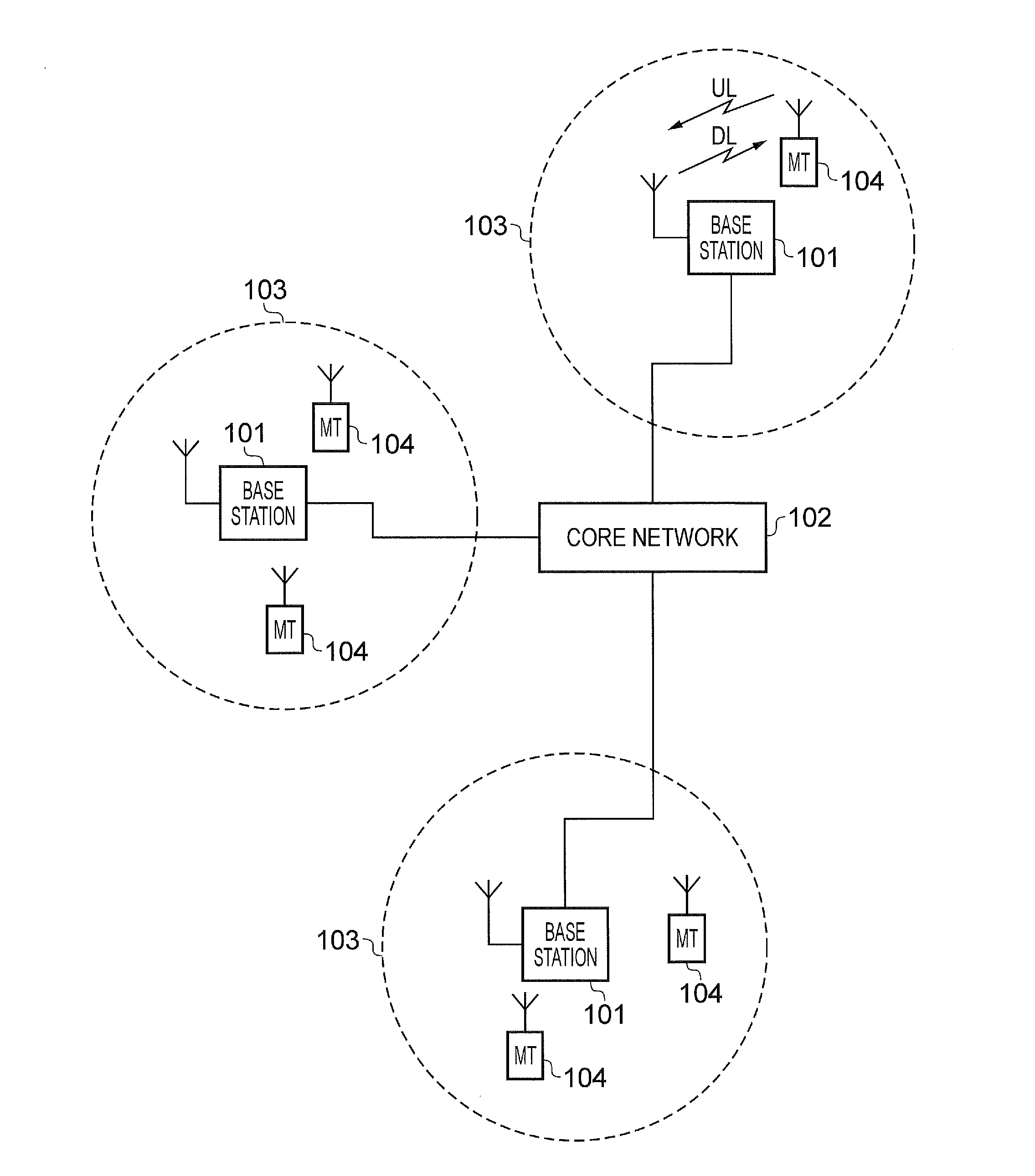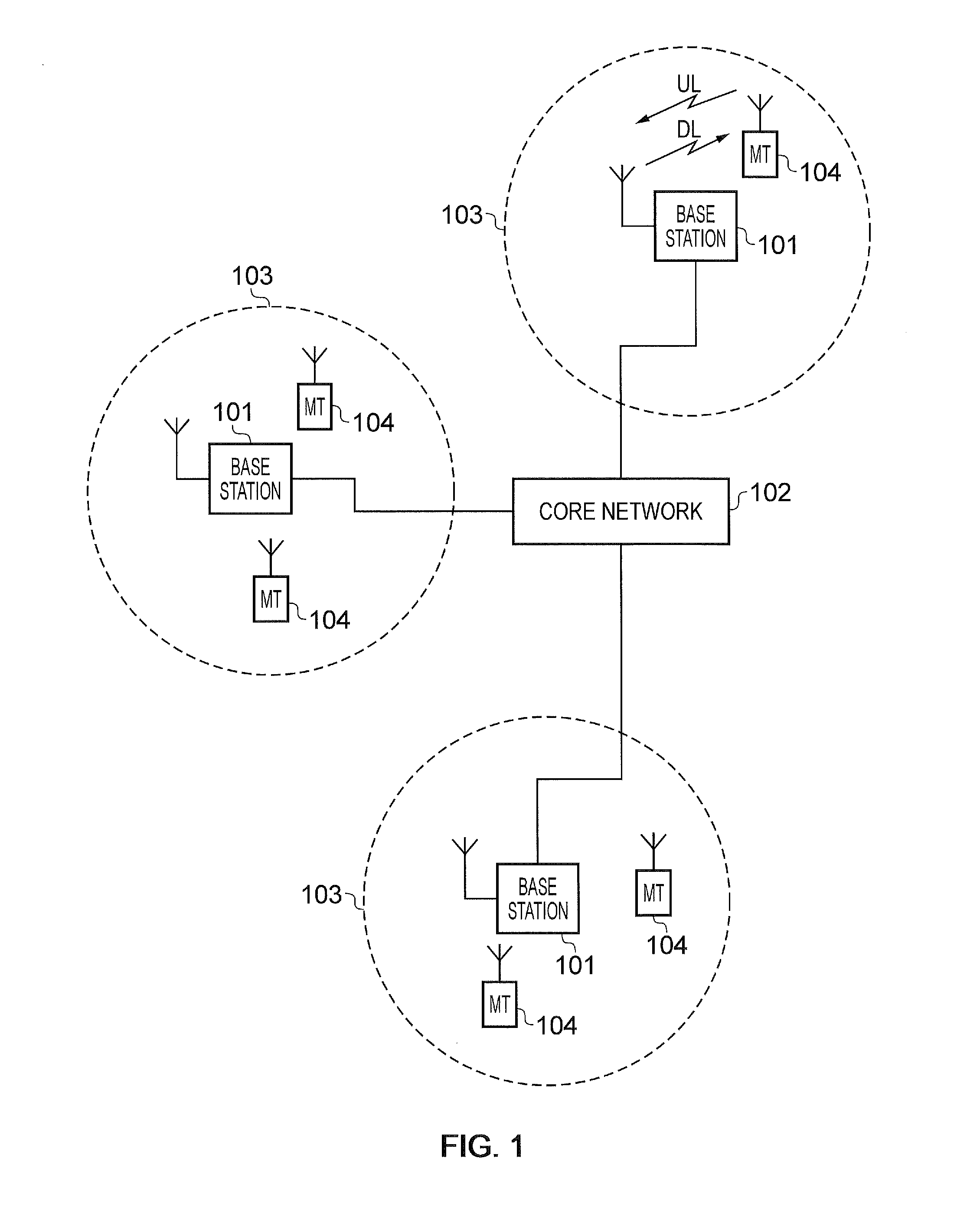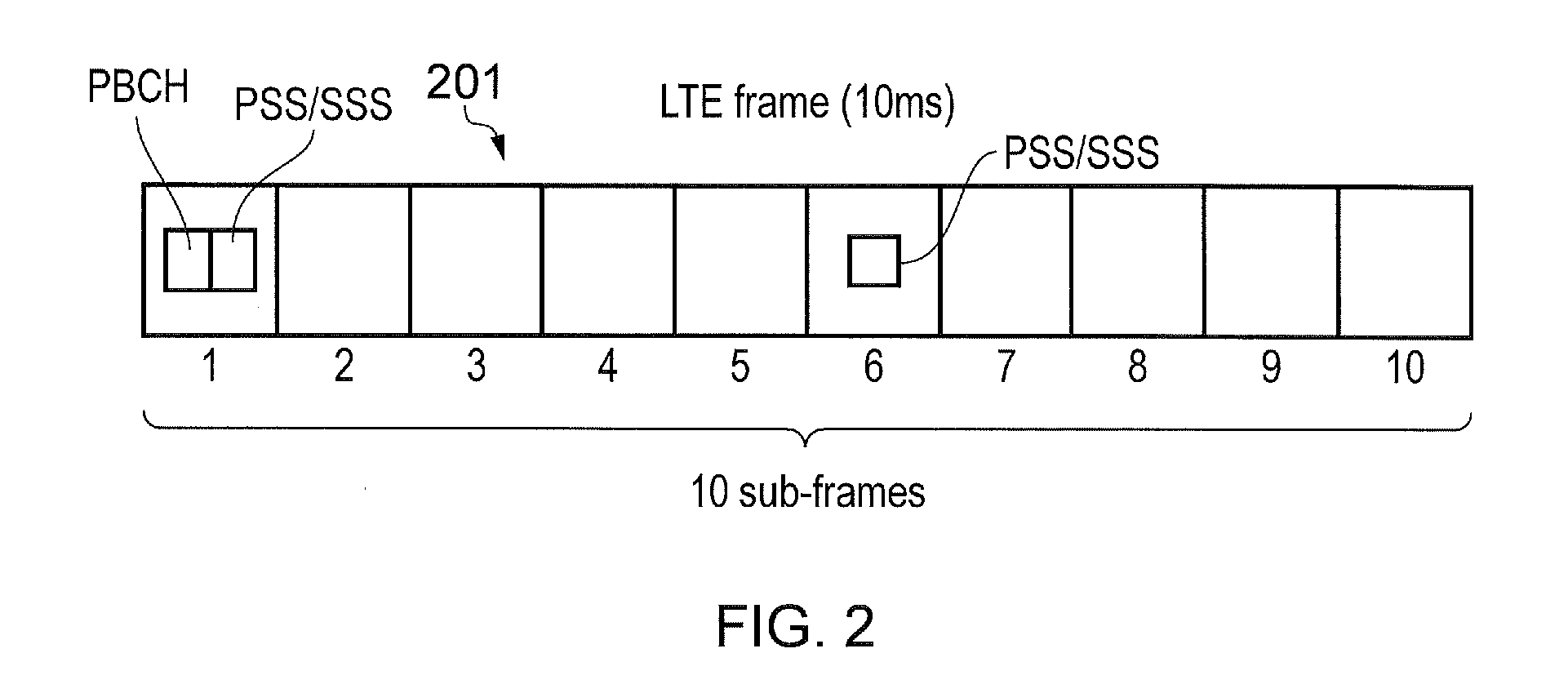Mobile communication base station and method for allocating resources outside of a virtual carrier based on ue capabilities
a mobile communication base station and capability technology, applied in the direction of transmission path division, machine-to-machine/machine-type communication services, wireless commuication services, etc., to achieve the effect of reducing bandwidth, reducing congestion, and increasing the capacity of virtual carriers
- Summary
- Abstract
- Description
- Claims
- Application Information
AI Technical Summary
Benefits of technology
Problems solved by technology
Method used
Image
Examples
example network
[0031]FIG. 1 provides a schematic diagram illustrating the basic functionality of a conventional mobile communications system.
[0032]The network includes a plurality of base stations 101 connected to a core network 102. Each base station provides a coverage area 103 (i.e. a cell) within which data can be communicated to and from communications devices 104. Data is transmitted from a base station 101 to a communications device 104 within a coverage area 103 via a radio downlink Data is transmitted from a communications device 104 to a base station 101 via a radio uplink The core network 102 routes data to and from the base stations 104 and provides functions such as authentication, mobility management, charging and so on.
[0033]The term communications devices will be used to refer to a communications terminal or apparatus which can transmit or receive data via the mobile communications system. Other terms may also be used for communications devices such as personal computing apparatus,...
PUM
 Login to View More
Login to View More Abstract
Description
Claims
Application Information
 Login to View More
Login to View More - R&D
- Intellectual Property
- Life Sciences
- Materials
- Tech Scout
- Unparalleled Data Quality
- Higher Quality Content
- 60% Fewer Hallucinations
Browse by: Latest US Patents, China's latest patents, Technical Efficacy Thesaurus, Application Domain, Technology Topic, Popular Technical Reports.
© 2025 PatSnap. All rights reserved.Legal|Privacy policy|Modern Slavery Act Transparency Statement|Sitemap|About US| Contact US: help@patsnap.com



